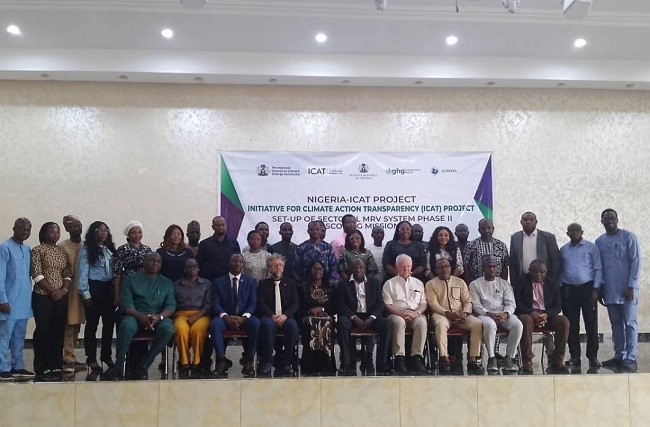As Nigeria enters the second stage of creating its measurement, reporting, and verification (MRV) framework, experts have reiterated the importance of openness, calling it a beacon of hope that can inspire climate action among rural people across the country.

Transparency, according to the stakeholders who emphasised its significance at a forum hosted by the National Council on Climate Change Secretariat (NCCCS) in Abuja to consult on the establishment of the Phase II MRV framework, would enable a complete and integrated MRV system that accurately tracks and reports emissions across all industries.
They went on to assert that it will also help the government track its progress towards its Nationally Determined Contributions (NDCs) goals and achieve its obligations under the Paris Agreement.
“If we are to talk about climate finance, we have to talk about transparency, and if we have to talk about transparency, we have to talk about MRV systems,” Mr. Ibrahim Abdullahi Shelleng, the Senior Special Advisor to the President on Climate Finance and Stakeholders Engagement, stated.
The presidential adviser advocated for a standardised MRV system that includes people living in frontline communities to encourage them to adopt climate-change-related action. He also wants Nigeria to update its data and establish an institutional collection system.
Speaking on the objective of the workshop, Dr Bala Bappa, ICAT Country Coordinator, said it was to assist Nigeria in developing an MRV framework to support the nation’s NDCs under the Paris Agreement.
“A crucial aspect of this scoping mission was to engage stakeholders in creating a comprehensive MRV framework for the Industrial Processes and Product Use (IPPU) sectors, which was not included in ICAT Phase I’s priority sectors,” he hinted.
Dr Bappa explained that this technical support will empower the country to develop and implement a sectoral MRV system.
From Nigeria’s first Biennial Transparency Report in December 2024 to the United Nations Framework Convention on Climate Change (UNFCCC), the highest-emitting sectors in Nigeria from 2000 to 2022 based on their gross emissions were LULUCF with 63%, waste with 99%, energy with 111%, agriculture with 75%, and IPPU with 947%. Citing these insights, an increase in CO₂ remained the highest GHG in Nigeria, with 70%, and methane, 25%, from 2000 to 2022.
The IPPU sectors in Nigeria cover the chemical industry, the metal industry, non-energy uses of products, the production and use of fluorinated products, and other industries. For tracking purposes of the data sources, experts say the activity level and emission factors will be used for each tier approach.
While in the mineral industry, where the production of cement, lime, glass, and other processes of carbonates and ceramics releases GHG emissions, the MRV system is set to have methodology for calculation and data requirements.
For private sector companies and civil society organisations (CSOs) stakeholders mapping, Dangote Industries Limited, BUA Group, Oxfam Nigeria, and Flour Mills of Nigeria were mapped based on the diagonal metrics.
While federal MDAs are in the horizontal metrics (Lagos, Rivers, and Kano MDAs; Ministry of Environment; and Bank of Industry), sub-nationals are in the vertical metrics for the LULUCF MRV systems review and national reporting.
According to the organisers, to decarbonise the cement industry in line with Nigeria’s updated NDC, the recommendations from the IFF in a report are alternative fuel, energy efficiency, substitution of clinker with alternative materials, and efficient cement use and alternative building materials (reducing the volume of concrete by using wood concrete composite to reduce 20% of steel for bridges). However, this does not require new cutting down of trees for wood-concrete composite.
The reason for gathering and reporting this data is to address MRV guidelines, the transparency pillar, the operational GHG implementation system, and the energy transition plan.
Under the Enhanced Transparency Framework (ETF), nations need to track and provide an emission inventory report on mitigation and adaptation and to track progress on the implementation of NDCs, which is usually used for global stocktaking.
By Nsikak Emmanuel Ekere, Abuja
